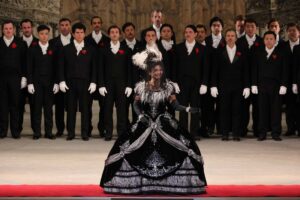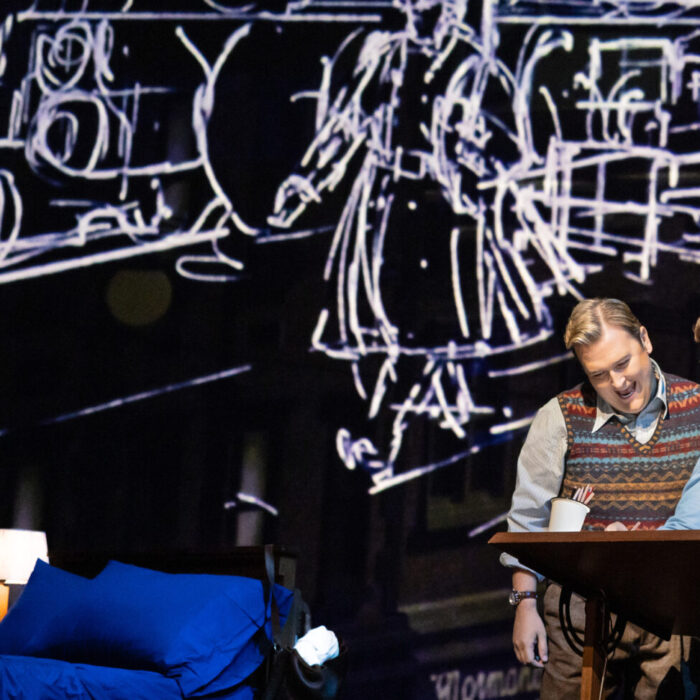
Teatro alla Scala 2024-25 Review: La Cenerentola
By Bernardo Gaitan(Credits: Brescia e Amisano)
Just days before the premiere of his new opera, Gioachino Rossini – true to his habits and to the conventions of his time – chose to speed up the process. For the Sinfonia (overture), he reused one he had written a year earlier for “La Gazzetta,” while for the protagonist’s final rondò, he adapted a fragment from the tenor aria in “The Barber of Seville,” which, soon after its premiere, singers began dropping due to its difficulty. At the same time, he entrusted his collaborator Luca Agolini with composing the stepsisters’ arias, Alidoro’s aria, and all of the recitatives, so that he could focus on the remaining arias and ensembles. The result was triumphant: an immediate success that, even during the composer’s lifetime, often led audiences to identify him more with “La Cenerentola” than with “The Barber,” as is the case today. It is worth recalling that the opera reached La Scala only a few months after its Naples premiere. Yet by the end of the nineteenth century, the work had fallen into neglect, only to be restored in more recent times as an indispensable repertory title.
There are productions that transcend their moment and become part of opera history. Such is the case of “La Cenerentola,” staged by Jean-Pierre Ponnelle, revived countless times around the world, and still retaining its full charm. At La Scala, since 1973, this title has been identified exclusively with his version, which has become a true emblem of the Milanese theater’s tradition. One only has to recall the legendary video recording with Frederica Von Stade, Francisco Araiza, and Paolo Montarsolo, under Claudio Abbado’s baton and filmed at the Piermarini itself, to confirm its iconic status. The sets, inspired by old black-and-white engravings from fairy-tale books, the elegant costumes of extraordinary taste, and the geometric symmetry of the staging all reveal the genius of Ponnelle, who passed away in 1988, but whose legacy endures in the elegance and poetry of his vision.
The revival of this production-absent since 2019, offered the young artists of the Accademia Teatro alla Scala the chance to test themselves against one of the cornerstones of the repertoire. The Academy’s productions have often surprised by their quality, at times even surpassing certain professional casts: we need only recall the outstanding “Il cappello di paglia di Firenze” in 2024 of which reached a remarkable level. This time, however, luck was not on their side.
Production & Musical Details
On stage, the revival by Federica Stefani added gags and superfluous effects worthy of a clumsy 1980s sitcom: tinkling chimes to highlight the protagonists’ love at first sight or recordings of birds after the storm, despite the scene taking place at midnight. Such elements contribute little to a historic production that does not need “modernizing” or lightening up to remain effective, and instead clash with Ponnelle’s refined aesthetic and Rossini’s musical poetics.
Another problem, however, lay in the pit. In his La Scala debut, Gianluca Capuano surprised with bold choices that often lacked stylistic logic. While his direction emphasized rhythmic energy and dynamic variety, it was marred by excessive contrasts: tempi absurdly fast in some duets, unnecessarily slow in others, altered accents and dynamics that Rossini had notated precisely and that tradition has always respected, along with a highly unbalanced orchestral volume. It must be acknowledged that it is a great example of the famous Rossini crescendo, and it worked very well here. Admittedly, the student orchestra showed a marked unevenness, though also a willingness to follow his intentions; it should be noted that period instruments were used.
Far worse, however, was the handling of the recitatives: Marco Gatti at the fortepiano and Daniele Di Teodoro at the harpsichord indulged in interpolations foreign to the score, with a style more akin to a country circus than to Rossini’s repertoire, undermining the seriousness and difficulty this genre demands. In contrast, the men’s chorus of the Academy, prepared by Salvo Sgrò, performed with precision and energy, bringing solidity to the ensemble scenes.
The young voices in the principal roles fulfilled their tasks without truly standing out, confirming that nothing is more challenging than comedy, and especially Rossinian comedy. No matter how well-known the plot may be, and no matter how melodious the music, Rossini’s lightness requires interpretive maturity that these singers have not yet fully achieved.
Cast Details
In the title role, Mara Gaudenzi portrayed a humble, naïve, and kindhearted Angelina, shining the Cinderella’s psychology in ‘Una volta c’era un re.’ Her coloratura was agile and clean, her acting convincing, and her solid stage presence proved essential in the demanding ‘Non più mesta accanto al fuoco.’
As Ramiro, Pierluigi D’Aloia portrayed an elegant prince, with a pleasant timbre and discreet but well-placed high notes; his physique also reinforced the classic fairy-tale image of the role. His acting was convincing, and in the duet ‘Un soave non so che,’ he and Gaudenzi formed a memorable stage couple.
Chao Liu as Dandini had convincing moments, though with room for improvement. His robust, warm-toned voice carried well, but in the syllabic passages, his Italian diction betrayed some immaturity in bel canto style. Still, his stage charm won him sincere applause at the end. Baritone Paolo Ingrasciotta as Don Magnifico displayed an impressive vis comica, at times seeming more like a comic actor than an opera singer, fully exploiting Rossini’s writing to maximize the role’s physical and musical humor.
The stepsisters, played by María Martín Campos and Dilan Şaka, proved very effective in their caricatured roles: though modest in size, their parts elicited laughter thanks to their visceral and expressive acting. Finally, Li Huanhong offered a well-intoned Alidoro with a beautiful vocal line; however, his vocal resources would have been better suited to the aria composed by Agolini -intended for a bass with fewer demands- since tackling Rossini’s version exposed certain technical immaturities.
A theatrical classic like “La Cenerentola” needs no absurd additions to continue working its magic. And although this performance held together thanks to the score and the performers’ efforts, the result made clear that the Academy – so often a beacon of excellence- will need to reclaim its level in “L’elisir d’amore,” scheduled for September 2026. The audience, largely foreign and not well-versed in operatic conventions (as shown by their applause at the wrong moments), nonetheless gave the performers a warm ovation – proof that Rossini’s enchantment remains irresistible, even under less than ideal conditions.



